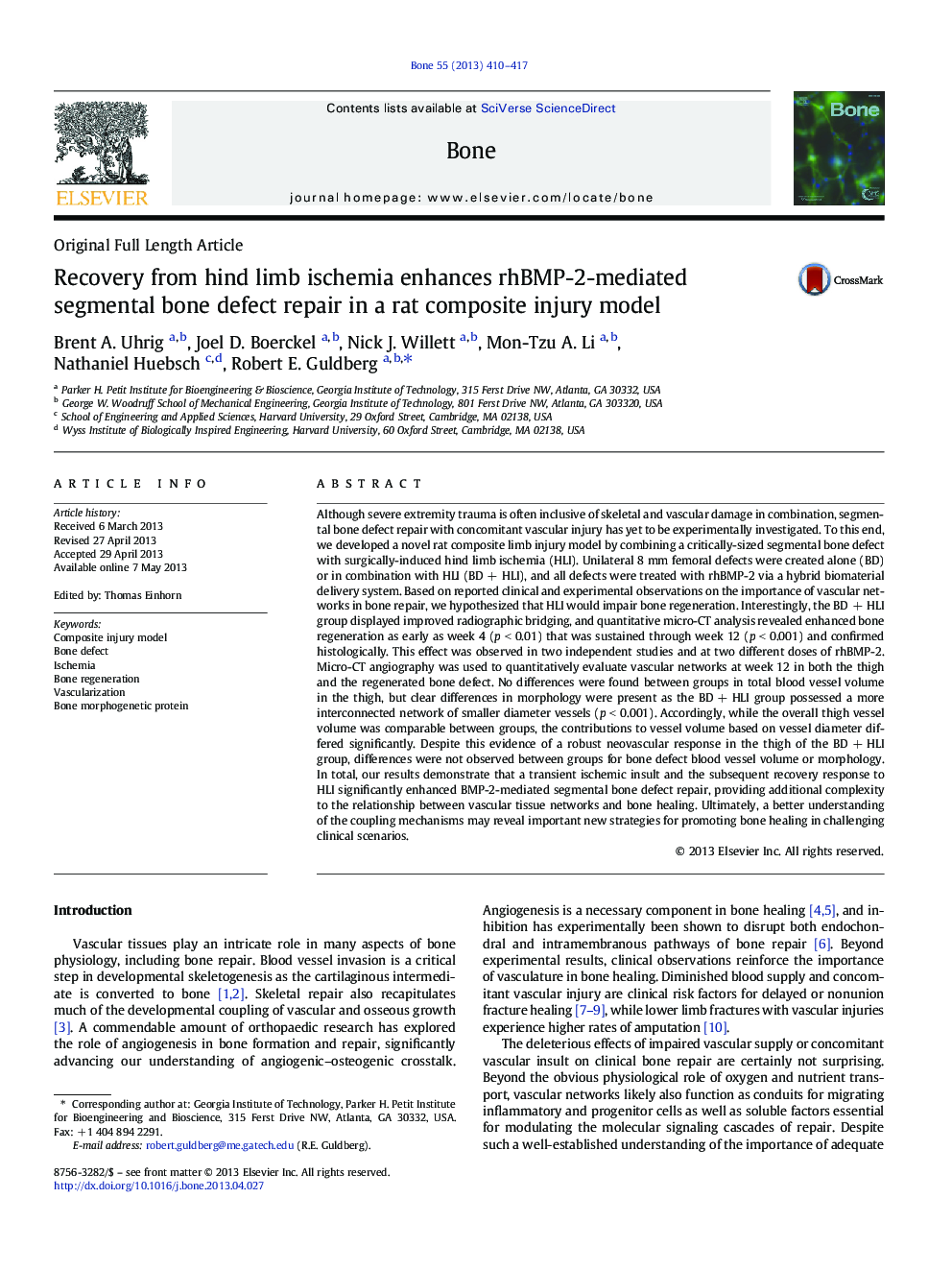| کد مقاله | کد نشریه | سال انتشار | مقاله انگلیسی | نسخه تمام متن |
|---|---|---|---|---|
| 2779232 | 1153256 | 2013 | 8 صفحه PDF | دانلود رایگان |

• Hind limb ischemia is combined with a segmental bone defect in a rat composite injury model.
• The endogenous response to ischemia promoted enhanced bone regeneration in the defect.
• A robust neovascular response to ischemia resulted in vessel morphology differences in the thigh.
• Despite these differences, vessel ingrowth to the defect was similar between groups.
Although severe extremity trauma is often inclusive of skeletal and vascular damage in combination, segmental bone defect repair with concomitant vascular injury has yet to be experimentally investigated. To this end, we developed a novel rat composite limb injury model by combining a critically-sized segmental bone defect with surgically-induced hind limb ischemia (HLI). Unilateral 8 mm femoral defects were created alone (BD) or in combination with HLI (BD + HLI), and all defects were treated with rhBMP-2 via a hybrid biomaterial delivery system. Based on reported clinical and experimental observations on the importance of vascular networks in bone repair, we hypothesized that HLI would impair bone regeneration. Interestingly, the BD + HLI group displayed improved radiographic bridging, and quantitative micro-CT analysis revealed enhanced bone regeneration as early as week 4 (p < 0.01) that was sustained through week 12 (p < 0.001) and confirmed histologically. This effect was observed in two independent studies and at two different doses of rhBMP-2. Micro-CT angiography was used to quantitatively evaluate vascular networks at week 12 in both the thigh and the regenerated bone defect. No differences were found between groups in total blood vessel volume in the thigh, but clear differences in morphology were present as the BD + HLI group possessed a more interconnected network of smaller diameter vessels (p < 0.001). Accordingly, while the overall thigh vessel volume was comparable between groups, the contributions to vessel volume based on vessel diameter differed significantly. Despite this evidence of a robust neovascular response in the thigh of the BD + HLI group, differences were not observed between groups for bone defect blood vessel volume or morphology. In total, our results demonstrate that a transient ischemic insult and the subsequent recovery response to HLI significantly enhanced BMP-2-mediated segmental bone defect repair, providing additional complexity to the relationship between vascular tissue networks and bone healing. Ultimately, a better understanding of the coupling mechanisms may reveal important new strategies for promoting bone healing in challenging clinical scenarios.
Journal: Bone - Volume 55, Issue 2, August 2013, Pages 410–417